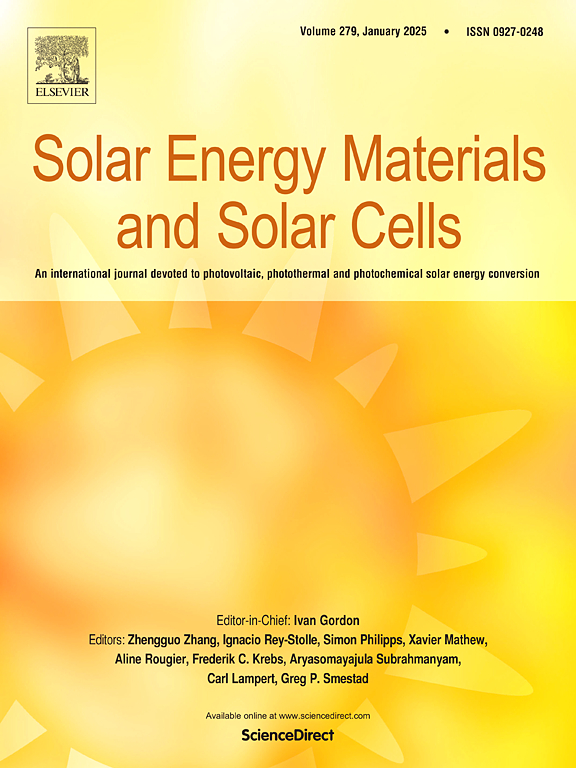Resonant-reflecting/absorbing coatings for maximizing the efficiency of hybrid thermal-electric power generation
IF 6.3
2区 材料科学
Q2 ENERGY & FUELS
引用次数: 0
Abstract
Solar energy is one of the fastest-rising forms of renewable energy, with photovoltaics (PV) being the most popular harvesting method. Photovoltaic solar cells suffer from limited exploitation of the solar spectrum, with unused light being the cause of parasitic phenomena such as thermalization and degradation of useful lifetime. These problems are overcome by hybrid thermal-electric power generation. In this scheme, a selective reflector-absorber provides the PV cell only with light that can be effectively converted into electrical energy and absorbs the rest of the solar spectrum, converting it to heat which is further utilized. This dramatically increases the useful lifetime of PV cells while increasing the overall energy conversion efficiency of the system. We present selective ultra-thin selective reflectors-absorbers, based on Fano-resonant optical coatings and metal-dielectric-metal optical coatings, which are tailored for typical single- and multi-junction solar cells. The tailored reflectance in the visible spectral region and absorption in the remainder of the ultraviolet and infrared solar spectrum enables up to 60.58 % total thermal-electric system efficiency.

共振反射/吸收涂层,最大限度地提高热电混合发电的效率
太阳能是发展最快的可再生能源之一,其中光伏发电(PV)是最受欢迎的收集方法。光伏太阳能电池的太阳能光谱利用有限,未使用的光是寄生现象的原因,如热化和使用寿命的退化。这些问题被热电混合发电所克服。在这个方案中,一个选择性反射-吸收器只向光伏电池提供可以有效转化为电能的光,并吸收太阳光谱的其余部分,将其转化为进一步利用的热量。这大大增加了PV电池的使用寿命,同时提高了系统的整体能量转换效率。我们提出了基于fano谐振光学涂层和金属-介电-金属光学涂层的选择性超薄选择性反射-吸收器,这是为典型的单结和多结太阳能电池量身定制的。在可见光光谱区域的量身定制的反射率和吸收在紫外和红外太阳光谱的其余部分,使高达60.58%的总热电系统效率。
本文章由计算机程序翻译,如有差异,请以英文原文为准。
求助全文
约1分钟内获得全文
求助全文
来源期刊

Solar Energy Materials and Solar Cells
工程技术-材料科学:综合
CiteScore
12.60
自引率
11.60%
发文量
513
审稿时长
47 days
期刊介绍:
Solar Energy Materials & Solar Cells is intended as a vehicle for the dissemination of research results on materials science and technology related to photovoltaic, photothermal and photoelectrochemical solar energy conversion. Materials science is taken in the broadest possible sense and encompasses physics, chemistry, optics, materials fabrication and analysis for all types of materials.
 求助内容:
求助内容: 应助结果提醒方式:
应助结果提醒方式:


